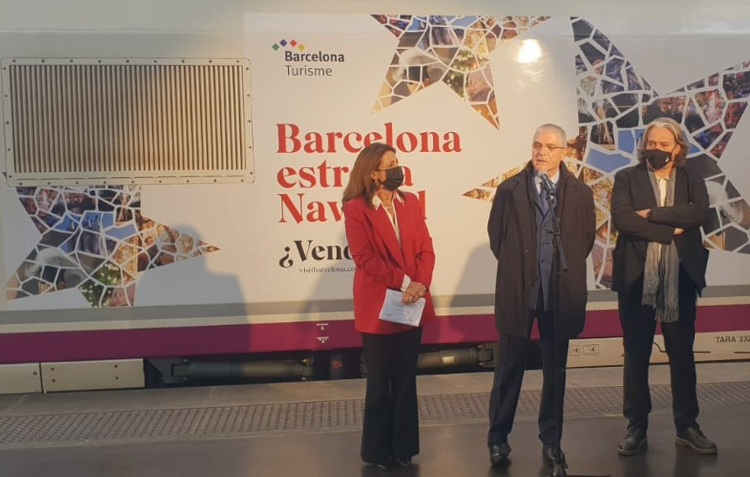Barcelona aims to become southern Europe’s top Christmas destination
Tourism Office launches new campaign aimed at attracting visitors from Spain and across Europe

Barcelona’s Tourism Office and Spanish public train operator, Renfe, have presented a new Christmas campaign, which appeals to Spanish and European visitors to come to the Catalan capital city during the winter season. Officials want to reinforce Barcelona as the best destination in southern Europe to visit during Christmas time.
A special promotional video for the new push highlights the city’s retail, food and cultural attractions and landmarks during the festive season. In addition to the online effort, Renfe will cover their high-speed trains with promotional advertising for the Barcelona Christmas campaign.
Marian Muro, the Tourism Office's director said: "This is the first time we have presented a Christmas campaign in Madrid because we want to have an impact on visitors from well-established markets, and the main cities connected by the high-speed rail network, including Bilbao and Valencia." The campaign will also focus on "European markets, such as the United Kingdom, France, Italy and the Netherlands," added Muro at a press conference.
Under the slogan 'Barcelona kicks off Christmas,' the Tourism Office will advertise the city with a video following the journey of a young couple. The two remember their last visit to Barcelona and the reason why they fell in love with the city. Images show landmarks during Christmas and ads will be shared until the end of the year.
Internationals look forward to gastronomy and shopping
The campaign focuses on attractions but also on retail as European and US visitors tend to spend more than 22% of their budget during their stays in this sector, according to figures shared by the tourism office. Gastronomy (with 45.1%) is still the main expense when visiting the city.
Last season, 6 out of 10 visitors to Barcelona came from Spain, but this year officials hope to regain French, Italian and British tourists, a group representing 25% of the market share before the Covid-19 pandemic.